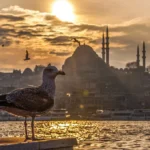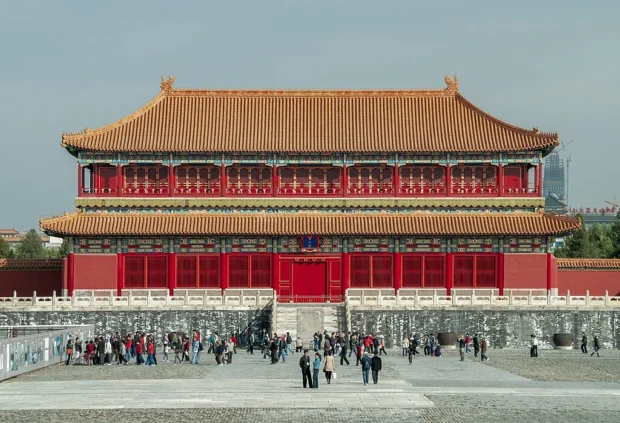The Forbidden City in Beijing stands as a remarkable symbol of China’s imperial past, inviting travelers into a world where centuries of history, culture, and artistry converge. This vast palace complex, once home to emperors and their courts, captures the imagination of visitors eager to witness magnificent architecture, intricate craftsmanship, and the echoes of dynasties long gone. If you are drawn to ancient fortifications, architectural marvels, and the layered narratives of empire, the Forbidden City offers a profound journey. Nestled in the heart of Beijing, this cultural landmark connects visitors not only with China’s imperial traditions but also with the living culture of the city that surrounds it.
Table of Contents
Entering the Heart of Imperial Power
Constructed between 1406 and 1420, the Forbidden City served as the political and ceremonial center of Chinese emperors for nearly 500 years. Its design reflects traditional Chinese palatial architecture, with a vast layout of courtyards, gates, halls, and living quarters enclosed by towering red walls and a deep moat. As I stepped through the Meridian Gate, the main entrance, I felt transported back to a world where the emperor’s presence was absolute and carefully orchestrated through spatial symbolism.
The complex covers approximately 720,000 square meters, containing nearly 1,000 buildings. Every detail, from the golden roofs to the carved stone lions guarding gateways, was imbued with meaning-expressing power, harmony, and cosmic order. The Forbidden City’s importance extends beyond its architectural grandeur; it is a living archive of art, politics, and cultural values that shaped East Asia.
Finding Your Way: Directions and Transport Tips
The Forbidden City sits centrally within Beijing, making it accessible by various means of transport. From Beijing’s airport, a direct taxi ride takes about 45 minutes to an hour, depending on traffic. For a more local experience, you can take the Airport Express Line to Dongzhimen and then switch to Subway Line 2 to Qianmen Station, which is a short walk from the south entrance of the Forbidden City.
If you’re staying near Beijing’s city center, the subway is convenient. The closest stop is Tiananmen East or Tiananmen West on Line 1. Both exits lead you within easy walking distance of the palace gates. Alternatively, buses numbered 1, 52, 82, and 120 also service the area around Tiananmen Square, adjacent to the Forbidden City.
Nearby accommodations offer a range from guesthouses to boutique hotels, often reflecting local architectural styles or positioned within hutongs-traditional narrow alleys-where you can sample authentic Beijing snacks and crafts. After your visit, the bustling Qianmen Street lies just south of the palace, famed for its classic Beijing-style eateries and craftsmen selling lacquerware and silk embroidery.
The Pulse of Palace Life: Visitor Tips and Best Times
To fully enjoy the Forbidden City, timing your visit is essential. Early mornings on weekdays, especially Tuesday through Thursday, offer the best chance to avoid crowds. The palace opens daily at 8:30 am, and arriving close to opening time allows you to experience the site with fewer tourists, making it easier to appreciate the quieter courtyards and detailed reliefs.
Spring and autumn present the most comfortable weather. The autumn months are particularly breathtaking when the ginkgo trees within the palace grounds turn their brilliant golden yellow. Summers can be hot and humid, while winter visits provide a crisp, clear atmosphere and a chance to see frosted rooftops, though some areas might be closed for maintenance.
Keep in mind that the Forbidden City is quite expansive, so comfortable walking shoes are a must. Bring water and consider taking breaks at the gardens or the Tea House within the palace. Photography is allowed in most areas, but tripods and large bags may be restricted for security reasons.
Booking Your Passage: Tours and Reservations
Since 2015, the Forbidden City has required visitors to book tickets online in advance due to limited daily entry numbers aimed at preservation and crowd management. Tickets often sell out during peak tourist seasons and Chinese public holidays, so planning ahead is critical. The official ticketing website offers options for standard entry, guided tours, and audio guides, which are invaluable for understanding the layers of history embedded in the complex.
Guided tours can range from a few hours to full-day experiences, often including highlights such as the Hall of Supreme Harmony, the Imperial Garden, and the Treasure Gallery. For those interested in architectural details or imperial customs, specialized tours focusing on the palace’s construction techniques or ceremonial uses enrich the visit. Check the official site for authorized tour providers and language options.
Visitors should bring identification for ticket pickup, and note that certain areas may be temporarily closed for restoration work, which is an ongoing effort to conserve the palace’s ancient stones, carved beams, and painted murals.
After exploring the Forbidden City, you might enjoy reading about other famous Beijing landmarks and cultural spots to complete your visit.
For those fascinated by Beijing’s historic treasures, a visit to the Great Wall near Beijing offers another dramatic glimpse into China’s imperial defense and scenic splendor.
Beyond Walls: Savoring Beijing’s Culture Nearby
After wandering through the Forbidden City, stepping into nearby traditional markets and eateries offers a delightful contrast and continuation of cultural experience. A short walk south leads to the bustling Wangfujing area, where street stalls sell local delicacies such as jianbing (savory crepes) and sugar-coated fruits on sticks. For a quieter meal, seek out a courtyard restaurant serving Peking duck, an iconic Beijing dish with a history as rich as the palace itself.
Craft lovers can find workshops and galleries within walking distance, offering silk painting, calligraphy demonstrations, and paper cutting-traditional arts that have thrived alongside the imperial court through centuries. The old alleys provide a glimpse into Beijing’s daily life, where orality and craft traditions persist in harmony with the city’s grand history.
The Hidden Stories and Legends Within the Walls
While the Forbidden City’s grandeur is well known, some fascinating lesser-known tales add layers to its allure. For example, the palace’s layout follows strict feng shui principles meant to align the emperor’s rule with the cosmos. The north-south axis of the complex is aligned with the Pole Star, symbolizing imperial stability.
If you enjoy historic Chinese cities, wandering through Chongqing’s hills and vibrant markets brings a lively contrast to Beijing’s imperial heritage, revealing another side of China’s rich culture in its streets and flavors. Walking Through Chongqing’s Hills and Markets is a great continuation after visiting the Forbidden City.
A quirky fact I discovered relates to the palace’s “Nine Dragon Screen” walls, each adorned with dragons holding pearls that shimmer differently depending on light and angle-an intricate play of artistry and symbolism rarely noticed at first glance.
Whispered stories also speak of secret underground passages and hidden chambers used during times of siege, though these remain largely unverified, adding an aura of mystery. The palace’s vast collection of ancient stone architecture, mosaics, and reliefs continues to inspire scholars and artists fascinated by the enduring language of these symbolic forms.
Official Resources and Further Information
For the most accurate and up-to-date details on visiting hours, ticket bookings, and official tours, the best reference remains the palace’s official website. Feel free to check its website to secure tickets, learn about current exhibitions, and access visitor guides.
This site provides practical help and rich historical background suitable for planning your journey and deepening your understanding of this monumental site.

Explorer of historical towns, ancient ruins, and traditional markets, combining modern travel with interest in heritage.
